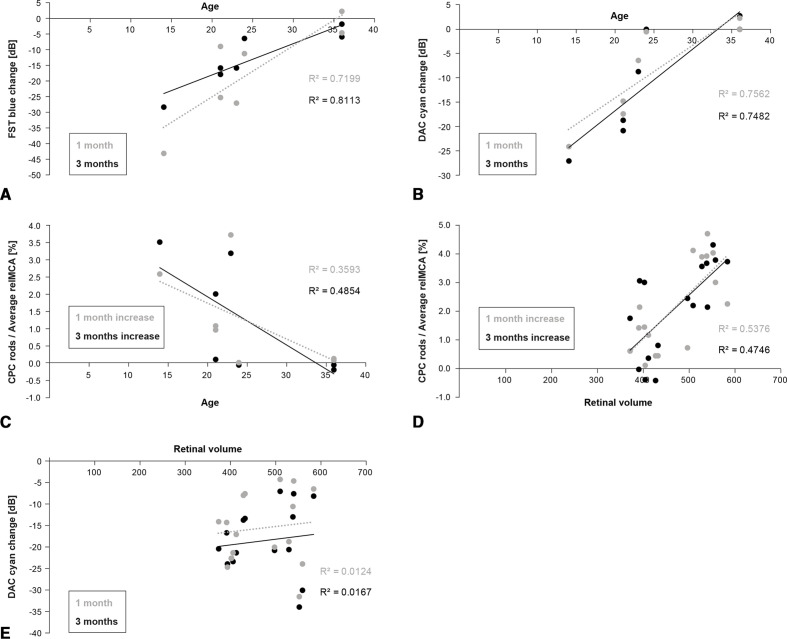Figure 3.
Analysis of prediction factors. (A) Correlation of age and the improvement of the dark-adapted threshold in dB as measured by the FST with blue stimuli. Grey: data from 1 month after treatment, black: data from 3 months after treatment. (B) Correlation of age and the improvement of the dark-adapted threshold in dB expressed as the average sensitivity change in the 15 degrees macular region measured by DAC cyan stimuli. Grey: data from 1 month after treatment, black: data from 3 months after treatment. (C) Correlation of age and the improvement of the pupil reaction to the scotopic CPC stimuli expressed as the average improvement of the relMCA in % in 15 degrees macular region. Grey: data from 1 month after treatment, black: data from 3 months after treatment. (D) Correlation of the retinal volume evaluated in four quadrants of 3–12 degrees eccentricity (superior, nasal, inferior, lateral) and the averaged relMCA in corresponding retinal locations. Grey: data from 1 month after treatment, black: data from 3 months after treatment. (E) Correlation of the retinal volume evaluated in four quadrants of 3–12 degrees eccentricity (superior, nasal, inferior, lateral) and the improvement of the dark-adapted sensitivity in dB expressed as the average threshold change in the 15 degrees macular region measured by DAC with cyan stimuli. Grey: data from 1 month after treatment, black: data from 3 months after treatment. CPC, chromatic pupil campimetry; DAC, dark-adapted chromatic perimeter; FST, full-field stimulus threshold; OCT, optical coherence tomography; relMCA, relative maximal constriction amplitude.

